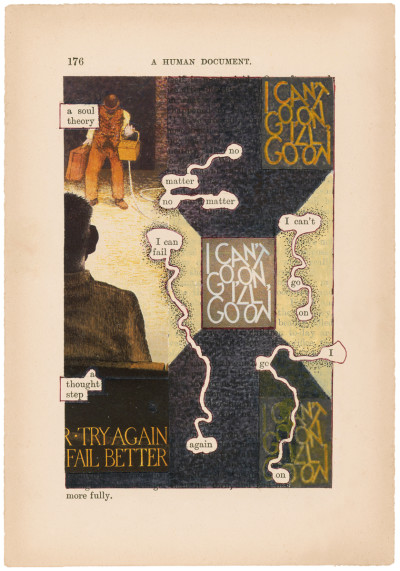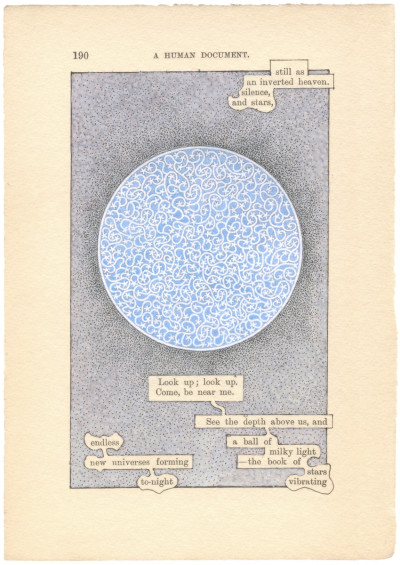In memoriam: Tom Phillips RA
In memoriam: Tom Phillips RA
By Nick Tite
Published 21 March 2023
Remembering the life, career, studio, and artworks of Tom Phillips, as recalled by his friend, the editor and publisher Nick Tite.
-
From the Spring 2023 issue of RA Magazine, issued quarterly to Friends of the RA.
Tom Phillips played a pivotal role in the artistic life of the Royal Academy. Elected as a Member in 1984, he served as Chairman of the Exhibitions Committee from 1995 until 2007. His working relationship with the mercurial Norman Rosenthal, the RA’s Exhibitions Secretary, was key, and together with the curatorial team, they oversaw an amazing programme of exhibitions: Nicholas Poussin, Sensation, Monet in the 20th Century, Botticelli’s Dante and Aztecs, to name a few of the 70-plus shows put on by the RA during this period – and not forgetting the hugely ambitious Africa: The Art of a Continent in 1995-96, which Tom not only curated but for which he also edited the catalogue.
Tom embraced the RA once he was on the inside but, like many other Academicians elected before and after him, he was less than enthusiastic towards the institution when he was on the outside. A year before he joined, I had taken a part-time job at the Academy to start RA Magazine. At the time, I was working for Tom producing the etchings for his major project of translating and illustrating Dante’s Inferno. When I told him what I was intending to do, his face said it all. It wasn’t an institution he or his peer group had much to do with. This changed, however, with his election to Membership. The painter R.B. Kitaj, one of his contemporaries whose work he particularly admired, had been elected at the same time, and, knowing this, Tom jokingly announced that he couldn’t possibly refuse membership as Ron had accepted.
Tom was a hugely talented artist working across a variety of art forms which included painting and sculpture, photography and musical composition. He was equally at home with the written word as he was the visual world and invariably connected both with his text-based artworks. Drawings of Dante as a “hatchet-faced ascetic”, as Tom described him, covered the studio of his south London home, with other rooms of the house lined with Inferno screenprint proofs, and large-scale charcoals and pastels that were always evolving, with textiles, African sculpture and Ashanti goldweights in the background, adding further texture to the creative environment. Tom’s interest was sparked by so much of what was around him and little went to waste. Images that appeared in one medium would then re-emerge elsewhere, reinterpreted and repurposed.
-

Drawing of Dante by Tom Phillips RA, 28 July 1977

Drawing of Dante by Tom Phillips RA, 1 August 1977

Drawing of Dante by Tom Phillips RA, 5 November 1977

Tom Phillips RA, Dante in his Study, 1982.
-
The studio was busy with printers coming and going, and a raft of famous names began to appear on the doorstep, among them Iris Murdoch, Salman Rushdie, the restaurateur Jeremy King and poet Adrian Mitchell, as portraiture became a preoccupation. And then there was cricket. Test Match Special was a constant, and occasionally we would down tools and go to the Oval for lunch and then watch the afternoon session. It also became the venue for Tom’s 50th birthday cricket match. As my time at the studio wound down, our meetings at the RA became more frequent. Tom became a regular contributor to the magazine, and lunch (jolly affairs) was the least I could offer to repay his involvement and the invaluable contacts he gave me.
-

Tom Phillips RA in his studio
Photo: David Vintiner
-
Although his output was so various, it is A Humument which comes most readily to mind. To create this “altered book”, Tom drew, painted and collaged over every page of W.H. Mallock’s 1892 novel A Human Document; he created new versions of the pages for successive editions, until he had refashioned every page of the source text twice. He called it a lifetime’s project, begun in 1966 (in the evenings, in case it became a folly and he regretted the waste of days), with the final edition published some 50 years later. Although it is described as a “treated Victorian novel” it had modernist influences, such as John Cage’s use of chance and William Burroughs’s cut-up technique in the treatments of the pages.
The mining of Mallock’s text provided Tom with an inexhaustible supply of poetry and prose to fit any situation, sentiment or thought. It provided a draft score for the opera Irma, even an accompanying commentary to Dante’s Inferno… the list of works goes on. A Humument is literature as a work of art. On the cover of the final edition, Tom signs off with an apposite poem gleaned from Mallock’s novel, which he sits in a tapestry of collaged colour: “Now the arts connect / in my poor little book / very rich for eyes”. Tom was an artist who spent his life making connections and making the ordinary extraordinary.
-

Tom Phillips RA, Humument Self Portrait at Fifty.

Tom Phillips RA, A Humument p176: Beckett.

Tom Phillips RA, A Humument p190: Silence and Stars.

Tom Phillips RA, A Humument p325: Only Connect.
-
Nick Tite is former Editor of RA Magazine and former Publisher for the Royal Academy.












